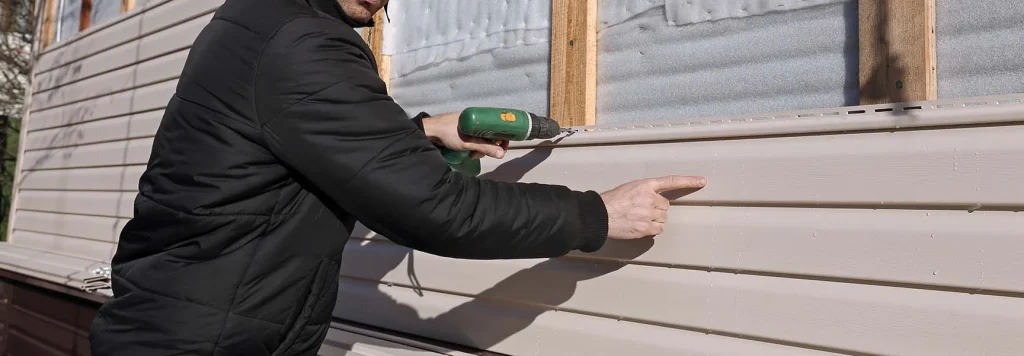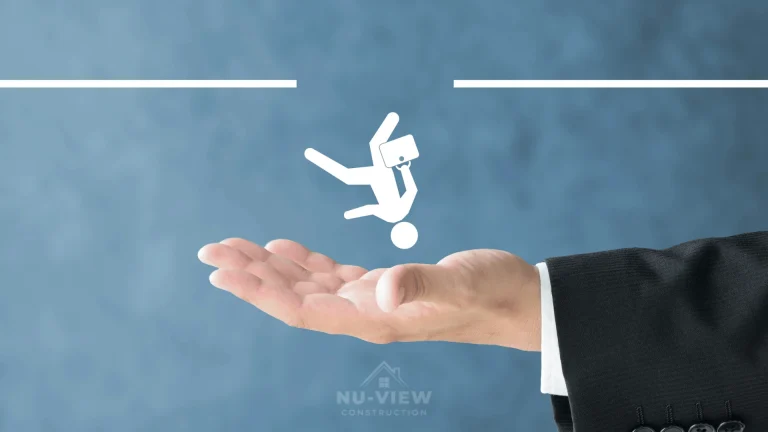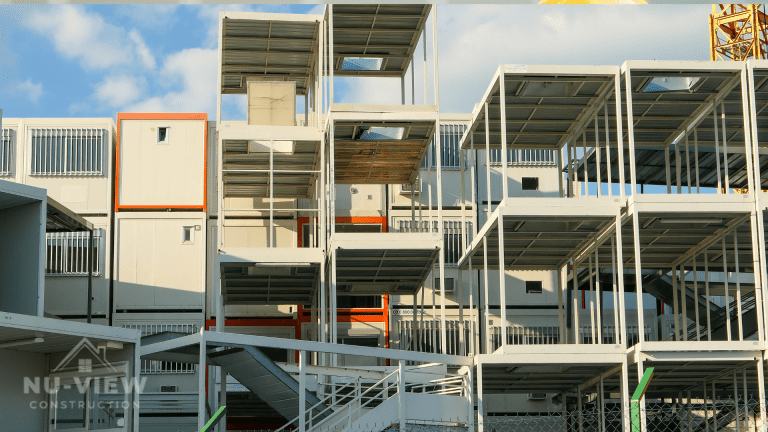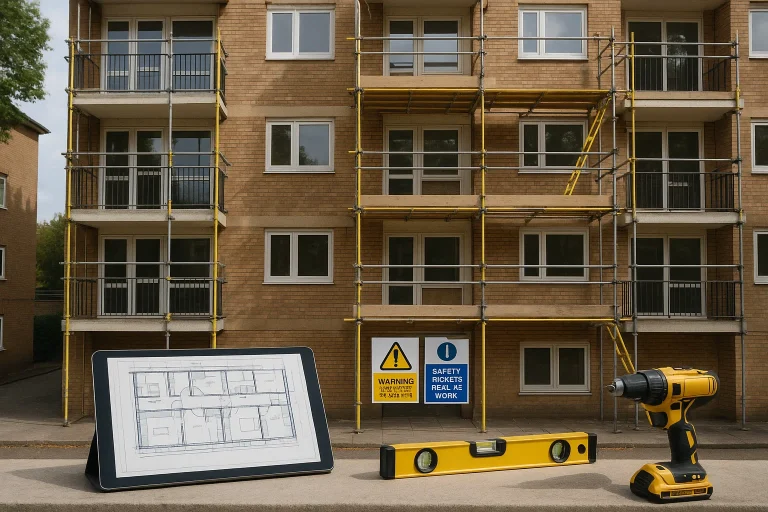Understanding Siding Damage
When it comes to maintaining the exterior of your home, siding repair is a crucial task that can help prevent further damage and ensure your home remains protected against the elements. Identifying and repairing siding damage promptly is essential for long-lasting results. In this comprehensive guide, we’ll walk you through everything you need to know about siding repair, from spotting signs of damage to performing effective siding maintenance. Whether you’re a seasoned DIY enthusiast or new to home repairs, this siding repair guide will provide you with practical tips and techniques to tackle siding issues and keep your home looking great. With our expert advice on siding inspection and DIY siding repair, you’ll be well-equipped to handle any challenges that come your way.
![A close-up view of siding damage on a Philadelphia home, highlighting cracks and peeling. Essential for understanding siding repair and maintenance to prevent further issues. For expert siding repair, contact [Your Company Name] to ensure long-lasting protection and a fresh exterior look.](https://nuviewconstructions.com/wp-content/uploads/2024/09/AdobeStock_201928622-1024x668-1.webp)
DIY Siding Reparation: Tools and Techniques
Siding damage can significantly impact the appearance and integrity of your home. Identifying and addressing these issues early can prevent costly repairs down the line. Common signs of damage include warping, cracking, and discoloration. These issues can arise from various sources, such as extreme weather conditions, physical impacts, or poor installation.
Siding inspection is the first step in determining the extent of the damage. Regular checks will help you catch problems early before they escalate. Look for visible signs of damage, such as holes or gaps, and pay attention to any signs of moisture intrusion or mold growth. These issues can compromise the protective layer of your siding and lead to more severe damage if not addressed promptly.
For those interested in DIY siding repair, having the right tools and understanding the proper techniques are crucial. A siding reparation guide can help you navigate the process effectively. Essential tools for DIY siding reparation include a pry bar, a hammer, a utility knife, and siding nails or screws.
DIY siding repair involves several steps:
- Inspect the Damage: Start by thoroughly examining the affected area. Determine whether the damage is localized or if it extends beyond the visible surface.
- Remove the Damaged Siding: Use a pry bar to carefully remove the damaged siding panels. Be cautious not to damage the surrounding siding or the underlying structure.
- Prepare the Area: Clean the area where the new siding will be installed. Remove any debris, nails, or screws.
- Install New Siding: Cut the replacement siding to fit and secure it in place with nails or screws. Ensure that the new siding aligns with the existing panels for a seamless look.
- Seal and Paint: Apply a sealant around the edges of the new siding to prevent water infiltration. If necessary, paint the new siding to match the rest of your home.

Essential Siding Maintenance Tips
Maintaining your siding is key to extending its lifespan and preventing damage. Regular siding maintenance can help you avoid costly repairs and ensure that your siding continues to protect your home effectively.
- Regular Cleaning: Clean your siding periodically to remove dirt, algae, and mildew. Use a gentle detergent and water solution, and avoid harsh chemicals that can damage the siding.
- Inspect for Damage: Conduct regular inspections to catch any signs of damage early. Look for cracks, loose panels, or signs of moisture intrusion.
- Address Issues Promptly: If you notice any damage, address it as soon as possible to prevent it from worsening. Timely repairs can save you from more extensive and expensive fixes.
- Check for Proper Drainage: Ensure that your gutters and downspouts are functioning properly to prevent water from accumulating around the base of your siding.
Professional Siding Repair vs. DIY
While DIY siding repair can be cost-effective, there are situations where hiring a professional may be the better option. Complex repairs or extensive damage might require specialized tools and expertise that a professional can provide. Additionally, professional contractors can ensure that the repair is done to industry standards and provide warranties for their work.
When considering whether to handle repairs yourself or hire a professional, weigh the complexity of the damage, your skill level, and the potential costs involved. For significant issues or if you’re unsure about the extent of the damage, consulting with a professional can ensure that your siding repair is done correctly and efficiently.
Conclusion
Siding repair is an essential aspect of maintaining the integrity and appearance of your home. By understanding the signs of siding damage, utilizing effective DIY siding reparation techniques, and implementing regular siding reparation, you can ensure that your siding remains in top condition. Whether you choose to tackle repairs yourself or seek professional assistance, addressing siding issues promptly will help protect your home and enhance its value.
For detailed guidance on siding repairs or to schedule a professional inspection, contact NuView Construction today. Our experts are ready to assist you with all your siding needs, ensuring long-lasting results and a beautifully maintained home.
Call us now at 267-435-2479 to schedule a consultation and let us help you turn your vision into reality.











